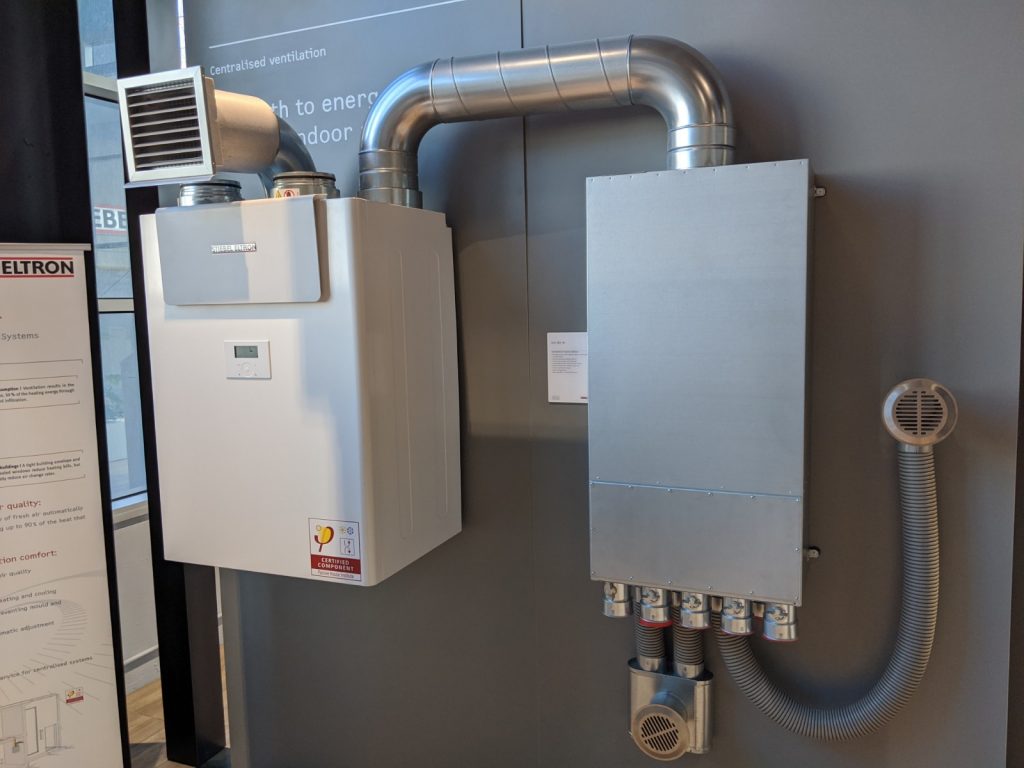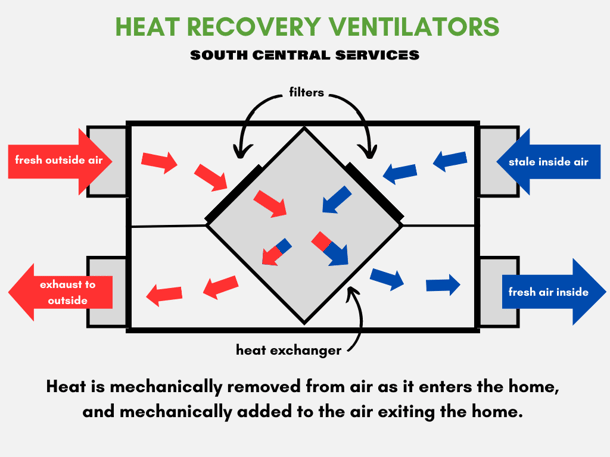The All-Inclusive Overview to the Uses of Heat Recovery Ventilation in Modern Buildings
Heat Recovery Ventilation (HRV) systems represent a significant advancement in developing innovation (HRV Heat Recovery Ventilation). They give a method for exchanging stagnant indoor air with fresh exterior air while reducing power loss. This technique not only enhances indoor air high quality yet likewise contributes to energy performance in both property and commercial structures. Comprehending the numerous applications and advantages of HRV can expose its important duty in modern-day design and sustainability efforts. The implications of this modern technology are worth checking out further
Comprehending Heat Recovery Ventilation Solutions

Although several contemporary structures prioritize energy efficiency, recognizing heat healing air flow (HRV) systems is essential for enhancing interior air high quality and decreasing energy intake. HRV systems function by moving warm from stale indoor air to incoming fresh air, efficiently preserving comfortable indoor temperature levels while minimizing energy loss. These systems contain a warmth exchanger, fans, and ductwork that help with the circulation of air. Throughout wintertime, HRV devices record and recycle heat from the outward bound air, while in summer, they can help cool down incoming air. By continually exchanging air, HRV systems additionally decrease humidity and the concentration of indoor toxins. Correct installment and upkeep of HRV systems are vital for their performance and effectiveness in enhancing general building performance and comfort.
Benefits of Heat Recovery Ventilation
Heat recovery ventilation systems provide various advantages that improve both energy effectiveness and interior air high quality in contemporary buildings. By catching and recycling energy from exhaust air, these systems substantially minimize cooling and heating prices, bring about reduced energy consumption. They keep a stable circulation of fresh outdoor air, reducing the risk of interior air toxins and irritants. This constant exchange assists manage humidity degrees, avoiding mold growth and making sure a much healthier living environment. Additionally, HRV systems add to sustainability goals by reducing overall carbon footprints. Their capacity to maximize air flow without giving up thermal convenience makes them a valuable addition to contemporary structure layout, promoting both economic and eco-friendly advantages.
Applications of HRV in Residential Structures
As house owners significantly prioritize energy performance and indoor air top quality, the applications of warm healing air flow (HRV) systems in property buildings have actually come to be more widespread. HRV systems are particularly beneficial in firmly sealed homes, where maintaining fresh air blood circulation is essential for avoiding moisture accumulation and interior contaminants. They properly move warmth from outgoing stagnant air to incoming fresh air, reducing energy costs connected with heating and air conditioning. In addition, HRVs can enhance comfort levels by managing humidity and temperature level. They are likewise adaptable for different property designs, consisting of single-family homes and multi-unit buildings. Generally, incorporating HRV systems supports lasting living methods while ensuring a much healthier indoor environment for owners.
HRV in Commercial and Commercial Settings
In commercial and commercial settings, the execution of heat recuperation ventilation (HRV) systems has actually become progressively essential for optimizing power efficiency and preserving air quality. These systems effectively move warmth from exhaust air to inbound fresh air, lowering the need for added heating or air conditioning. This not just lowers power costs but also adds to sustainability her latest blog efforts. Industries such as production, warehousing, and office structures profit substantially from HRV systems, as they aid control temperature and humidity degrees, making sure a comfortable and productive setting. HRV systems aid in removing impurities and excess dampness, enhancing indoor air quality. As regulations around air why not look here top quality end up being more stringent, the fostering of HRV innovation is likely to expand, making it a critical part of modern-day business and commercial infrastructure.
Future Fads in Heat Recovery Ventilation Technology

Regularly Asked Questions
Exactly How Does Heat Recovery Ventilation Effect Indoor Air High Quality?
Heat recovery ventilation substantially enhances indoor air quality by continuously exchanging stagnant interior air with fresh outside air while recuperating energy. This process reduces pollutants, keeps suitable moisture levels, and guarantees a much healthier setting for passengers.
Can HRV Solutions Be Set Up in Existing Buildings?
HRV systems can indeed be installed in existing buildings. Retrofitting might call for adjustments to ductwork and ventilation formats, yet it substantially improves energy performance and interior air click here for more info quality, making it a practical option for older frameworks.
What Maintenance Is Needed for HRV Solutions?

Are There Specific Climates Where HRV Is Extra Effective?
Heat recovery ventilation systems are particularly effective in climates with substantial temperature level distinctions in between seasons. These systems enhance energy efficiency by recuperating warm from exhaust air, making them excellent for both chilly and moderately cozy environments.
How Do HRV Equipments Affect Power Costs?
